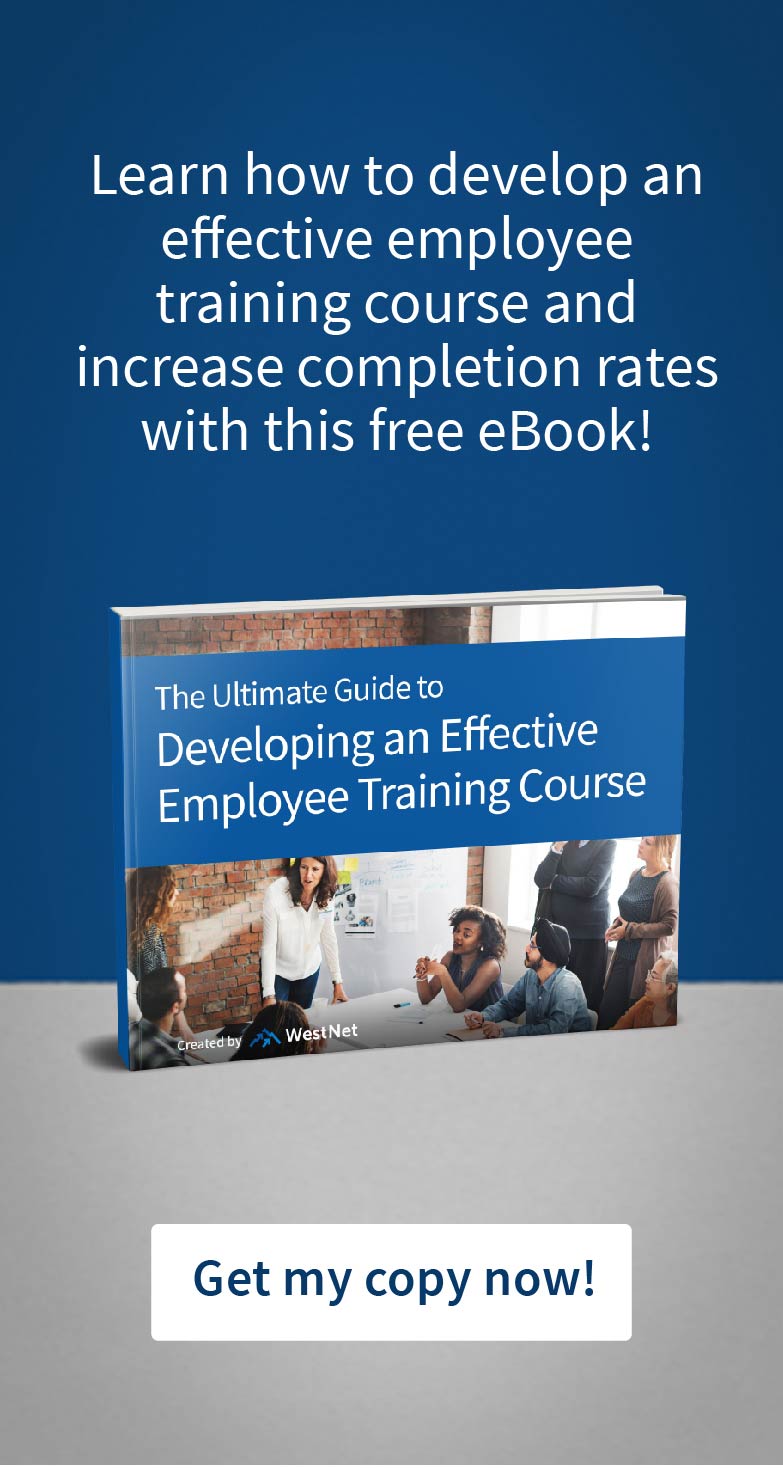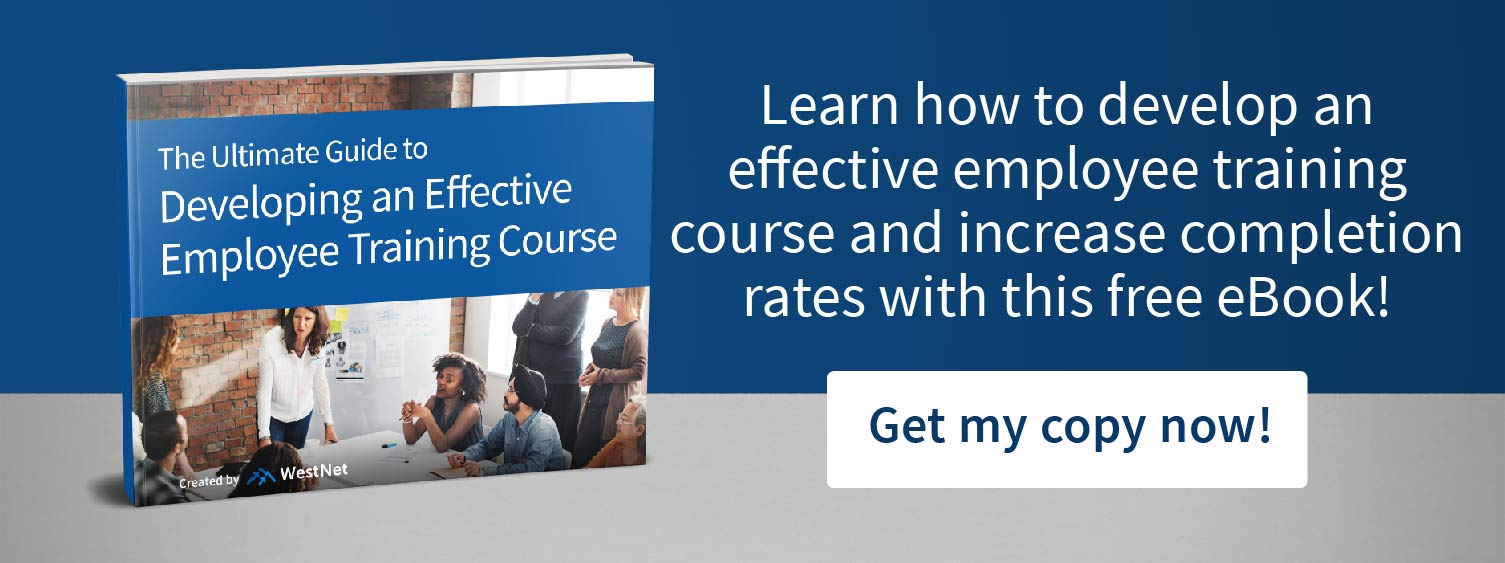The quality of your employee training programs has a direct effect on your organization’s success. That’s why you’ve put so much effort into creating a staff education model that nurtures employee excellence. Creating consistency in employee training across departments is essential for HR directors who want to maintain healthy compliance and productivity levels organization-wide. But how can you be sure that your program will scale?
Rethinking Employee Training: When One Size Should Fit All
Your goals for employee training programs may vary by department, but your ultimate aims exist within the same matrix of productivity, compliance, risk management, and employee wellness. That means it is essential to have a learning management structure that enables you to emphasize critical skills and core values at every stage of the training experience.
Inconsistent training quality can lead to productivity drain, resource mismanagement, and misdirected HR policy.
The key to creating an easily scalable employee education model across departments is to look at your training programs as systems that must adapt intuitively to the needs of your organization. Reimagine your worker training process as a learning structure that has core modules which must be designed to support productivity, compliance, risk management, and employee wellness. Here are a few tips to help you develop an effective learning experience approach.
Employee Productivity
While developing content that reinforces obvious skills such as time management and proper records keeping, do not neglect instruction that addresses the importance of “soft” skills that are critical to sustained performance excellence. These skills include effective communication, conflict resolution, and stress management, and are best taught through well-illustrated examples that present employees with practical steps to applying core principles to common situations.
According to recent research, visual content improves knowledge retention and promotes learner engagement. Choose a learning management system that allows you to use multimedia content, such as third-party video to underscore key concepts.
Select an LMS that can be customized as needed to make scalability effortless.
Worker Compliance
While the importance of OSHA, EEOC, and other regulations cannot be emphasized enough in employee training programs, you can cause your team to “tune out” with poorly presented and overly repetitive compliance-themed content.
Developing a curriculum that scales means making essential compliance principles universal and engaging. When learners remain actively involved with a subject via quizzes or other forms of interaction, say researchers, core concepts become easier to remember and apply.
While it is unlikely that content focused on employee compliance will ever be viewed as fun, make the subject less tedious by introducing short quizzes after small sections of content to immediately reinforce new concepts and keep the learner engaged.
Risk Management
Developing a scalable risk management curriculum involves promoting self-directed education. That’s because at its core, fostering a culture of effective risk management means inspiring employees to constantly verify and enhance risk management knowledge on their own as the need for new information arises. The best way to do this is to make self-paced learning accessible through technology that empowers employees to find relevant content quickly on any device.
A robust learning management system (LMS) will allow your employees to participate in on-going employee training on-demand, whether it is for specific skill reinforcement (like culturally sensitive conflict resolution) or general risk management on-boarding. Present topical risk management lessons in a FAQ format to enable your team to find the information they need instantly.
Employee Wellness
While various industries may define employee wellness differently, all organizations benefit from a healthy, engaged workforce. Wellness education is an important component of your training programs and making them scalable (and relevant) to every department in your organization is a challenge.
Fortunately, it is an easy challenge if your LMS software allows you to quickly customize your curriculum. Many aspects of productivity, compliance, and risk management education are also central employee wellness concepts, according to HR analysts.
Highlight the following skill sets and concepts as a part of your wellness education programming:
- Effective Time Management
- Stress Management
- Conflict Mediation
- Health and Safety Compliance
- Communications and Conflict Resolution
Present wellness concepts that are relevant to everyday workplace situations and let your content cover wellness and task-specific productivity, compliance, or risk management tips
Pick up some great tips on stress management and other skills from OSHA.
It Might Not Be Broken, But It Still Needs Fixing: Finding New Training Opportunities Through Technology
Use existing resources with relevant technology to optimize training opportunities.
Supporting consistent productivity, compliance, risk management, and employee wellness across multiple departments also means finding new opportunities to improve training quality and create educational interventions when required.
The easiest way to do this is to find an LMS that:
- Is user-friendly.
- Is cloud-based for easy, cross-device access.
- Offers integrated performance monitoring.
- Provides self-paced online learning.
- Is easily customizable.
- Provides immersive educational experiences using multimedia.
Finding the Right Learning Management System: 5 Must-Haves
An LMS that will help your organization scale employee training across multiple departments will:
- Monitor employee performance and educational outcomes from the same dashboard.
- Identify professional knowledge gaps and allow you to easily update the curriculum to target areas that require improvement.
- Use multimedia at any stage of a course to enhance knowledge retention.
- Employ the latest user experience (UX) design principles to make each lesson simple to navigate and complete.
- Let you receive exceptional support from the launch and through the life of your program.
With a robust platform designed to accommodate your organization’s changing needs, you can focus on content and employee support, rather than software customization and usability testing.
The Secret to a Powerful Employee Training Program? Don’t Start Small.
WestNet learning offers a suite of enterprise-grade features that make scaling employee training simple. From launch, your program will have the enterprise-grade features that you need to expand and customize employee training at will.
For more than 20 years, WestNet Learning has helped organizations scale employee training programs that enhance productivity and employee retention. WestNet Learning offers partnership-level support from day one to every client, empowering them to scale training on-demand, without the growing pains associated with expanding a training curriculum.
If you would like to learn more about how to engage and train your employees with efficiency so that you may increase your training course completion rates, feel free to reach out and schedule a 1-on-1 strategy session.


